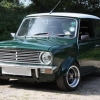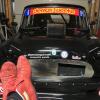#1

Posted 25 July 2015 - 07:36 PM
"If you are serious about it you could go for crossflow mains size - 54mm up from 50mm (whilst using std A+ size bearing journals)- this will put a massive amount of strength back into the crank as it'll reduce the distance from the bearing edge big end to mains - hence increasing strength. Then it would be a case of line boring the 3 mains (as you'd surely be doing anyway with a 4 bolt centre cap for this size?) Modify the crossflow bearings and bobs your uncle - a bullet proof bottom end."
Please could someone comment with more info about increasing the size of the bottom end, all the work required and what bearings to get and details of where to get the bearings?
#2

Posted 25 July 2015 - 08:05 PM
It's all covered in Vizard's 'blue bible', in the section on 'big motors'
#3

Posted 25 July 2015 - 09:14 PM
Rather confusing the way that was written on the other forum, while definitely do-able, you'd want to be turning some serious numbers all the time to make that mod worth while. You'll be up for serious coin for a Crank, and that'd before you start doing anything else.
Also, you'd want to look carefully through a few blocks before selecting one, as the holes for Main Cap Bolts are not in the same place in regards to the tunnels and there's nit a lot of meat there to start with, so it wouldn't be hard to break through the tunnel in to a bolt hole, which is a weak point in the first instance. Ideally, if you could get a hold of a block that hadn't had the Main Cap Bolt Holes drilled, it would be a better and safer starting point. It doesn't make much sense to strengthen the Crank at the expense of strength out of the block. Even stock blocks break here.
#4

Posted 26 July 2015 - 07:10 AM
#5

Posted 26 July 2015 - 08:30 AM
Blue one was the first edition / release, then there was a 2nd release, and the 3rd is the Yellow one.
It has a lot of info in that book, but it reads like a mad women's breakfast. It could have been split in to 2 sections for the most part, small bore and big bore. The chapters on Cylinder Heads for example, I think I've read them 4 or 5 times now and it chops & changes so often, in the same paragraph I feel as though I put the book down with less knowledge than when I picked it up!
#6

Posted 26 July 2015 - 04:03 PM
sounds expensive I haven't used Ford but can give you an idea for the mini equivalent last time I built a steel bottom end the three caps where just over £200, drill tap the centre caps for 4 bolts, machine the thrust faces and line bore the new mains was £600 and a new EN40B such as an Arrow crank was £1600. Set of new shells and thrust washers around £100 for ACL's.
Edited by The Principal, 26 July 2015 - 04:06 PM.
#7

Posted 26 July 2015 - 05:33 PM
Second edition was yellow 1998 don't have info on the third.Blue one was the first edition / release, then there was a 2nd release, and the 3rd is the Yellow one.
!
#8

Posted 26 July 2015 - 06:44 PM
Second edition was yellow 1998 don't have info on the third.Blue one was the first edition / release, then there was a 2nd release, and the 3rd is the Yellow one.
!
My 3rd edition is Yellow
#9

Posted 26 July 2015 - 07:51 PM
ive had a read and please could someone point me in the direction for the bearings required?
would i be able to buy the crank from minispares after the forging but before the machining as to get it machined to the correct size without needing to get metal sprayed onto the crank to increase the size of the main bearing sizes?
#10

Posted 03 August 2015 - 03:07 PM
adding 2mm to the radius ( 4mm ) to the diameter of the mains is going to make little difference especially when considering the cost of a bespoke crankshaft with 54mm mains and line boring the block and caps for new bearings and also still having cast iron caps from an x-flow.
May as well just do a 3 steel cap conversion to the block with a 4 bolt steel main cap. Be cheaper and more reliable.
http://www.med-engin...el-main-cap-set
#11

Posted 03 August 2015 - 04:49 PM
+1 for Guessworks comments
If the larger main bearings offered real advantages then would have expected companies like Swiftune and others to have these as part of their offerings.
Steve Roberts did use these special cranks in his ModSports racer, but not sure if regs allow this in most mini classes?
#12

Posted 03 August 2015 - 08:04 PM
+1 for Guessworks comments
If the larger main bearings offered real advantages then would have expected companies like Swiftune and others to have these as part of their offerings.
Steve Roberts did use these special cranks in his ModSports racer, but not sure if regs allow this in most mini classes?
In line with GW's and carbon's comments, I can't say I've found the stock 2" (or slightly under when ground) Mains an issue on these engines, even with big ponies. Sure, some of us have seen the odd busted crank, but every one I've seen has been from harmonics and not through the journal itself. In these instances, going up ~ 2 mm in dia could in fact make this situation worse as it will lower the harmonic resonant frequency of the crank.
One 'trick' we did in the racing days was to grind the cranks to the smallest undersize for which we could get bearings for (-0.040" on the Mains and -0.050" on the big ends - and they were the smaller journal to start with), this did several things;- It reduced loses (very very small numbers), reduced spinning mass and raised the harmonic frequency, along with other bottom end mods, outside of the frequency range that the engine could sensibly be spun at. Never had an issue from the cranks being at these sizes.
Edited by Moke Spider, 03 August 2015 - 08:05 PM.
#13

Posted 03 August 2015 - 08:21 PM
#14

Posted 03 August 2015 - 09:17 PM
It's the overlap between the main bearings and big ends, reducing the risk of fracture when the crank has had the stroke increased.
I see the thinking, however our cranks being a 3 bearing main, continuity is lost on the webs between 1 & 2 and 3 & 4. On a 5 Main Crank - maybe - however any real strength gain then would be from it having additional support.
The overlap in terms of surface area really is quite small, it could also provide an effective pivot point to around which the crank will twist a fatigue sooner, especially as the other side up not equally supported, in fact, it is un-supported.
As I did mention in my post above ^ I can't say this is a weakness of these engines. What will break them is harmonics, not a mm here or a mm there.
#15

Posted 04 August 2015 - 07:38 AM
Also tagged with one or more of these keywords: engine
Mini Technical Sections →
Problems, Questions and Technical →
Ac Dodd TuningStarted by Kevybmini , 04 Jun 2025 |
|
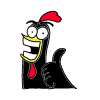
|
||
Mini Technical Sections →
Problems, Questions and Technical →
Am I Missing Something?Started by Rubbershorts , 21 May 2025 |
|
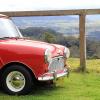
|
||
Mini Technical Sections →
Problems, Questions and Technical →
About To Do A Horrible Job - Wish Me Luck And TipsStarted by floormanager , 01 May 2025 |
|
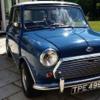
|
||
Mini Technical Sections →
Problems, Questions and Technical →
Which Idler Gear Bearing Is Correct?Started by JimmyStinkpickle , 28 Apr 2025 |
|
|
||
Mini Technical Sections →
Problems, Questions and Technical →
‘93 Spi Downpipe ReplacementStarted by ShabbyMini , 03 Apr 2025 |
|
|
1 user(s) are reading this topic
0 members, 1 guests, 0 anonymous users





